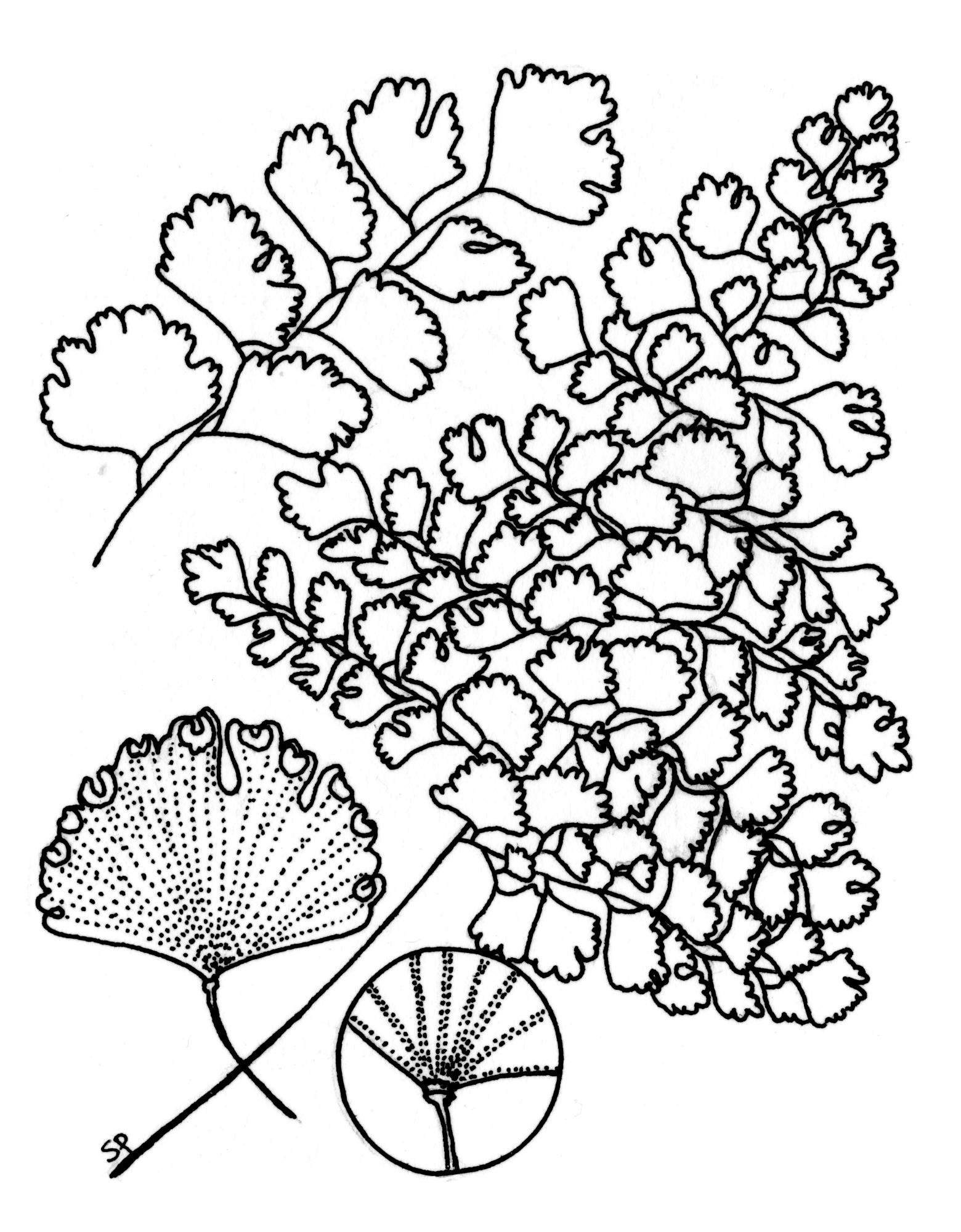
Rhizome short-creeping. Fronds in tufts, divided 3-4 times, to 70 cm or so long, 40 cm wide, evergreen. Blades more or less triangular in outline. Segments more or less rhomboid, stalked, easily shed on old plants. Sori numerous along segment margins; indusia oblong.
Needs shelter and warmth.
C & S America, West Indies.
Rhomboidal segments more than 1 cm long, jointed to stalks and shed in old plants. Cultivars are variable.
Source: (1995). Adiantaceae. In: . Horticultural Flora of South-eastern Australia. Volume 1, Ferns, conifers & their allies. The identification of garden and cultivated plants. University of New South Wales Press.

Segments cut into lobes that are further divided. Found in 1865 on Farley Hill, Barbados, imported to Australia in the 1920's.
Large. Segments large and compound, the terminal ones fused both to themselves and their stalk. Originated Ceylon, 1884, possibly from 'Farleyense'.
Adiantum tenerum 'Gloriosum Roseum'
Large. New growth rosy pink. Fronds arching, the segments smaller and more wavy. Probably originated at the nursery of Mr R.G. Marsh, Ipswich, Queensland, formerly 'Marsha's Gloriosum Roseum'.
Adiantum tenerum 'Lady Moxham'
Large. As 'Farleyense' but with larger, more broadly fan-shaped and wavier segments but variants may be encountered. Origin Unknown.
Adiantum tenerum 'Marsha's Pride'
Large. Segments mostly compound, broadly fan-shaped and stalkless, the margins deeply lobed and subdivided. Originated at the nursery of Mr R.G. Marsh, Ipswich, Queensland in 1932 as a cross between 'Gloriosum Roseum' and 'Superbia'.
Adiantum tenerum 'Scutum Roseum'
Medium-sized. New growth rosy pink. Segments more or less rhomboidal, lateral and upper margins lobed and finely toothed. Possibly originating from the nursery of Mr B. S. Williams, England around mid nineteenth century.